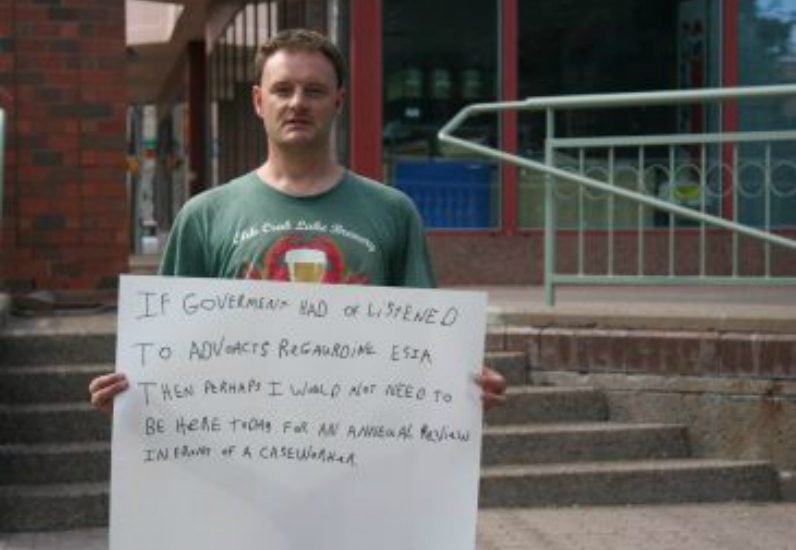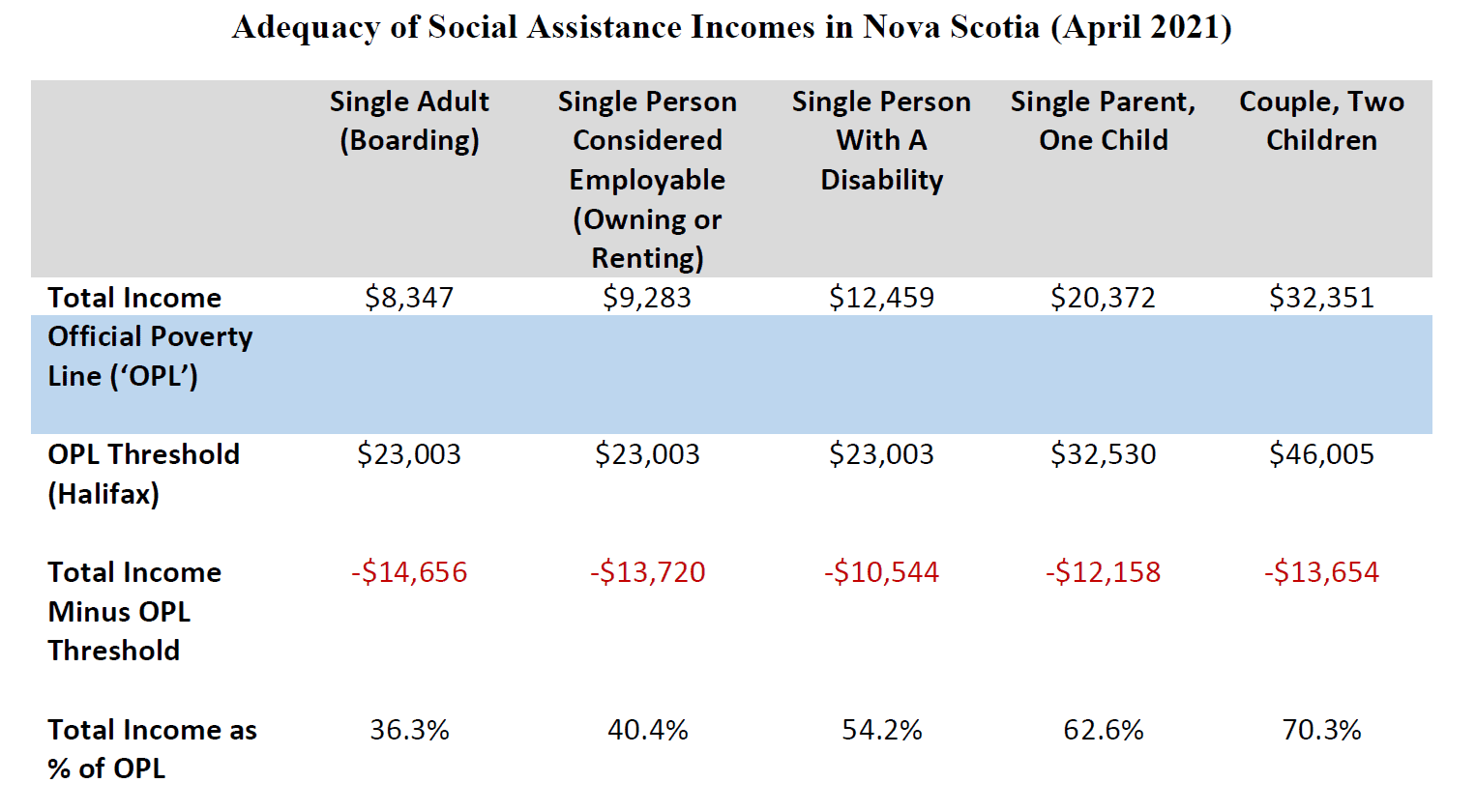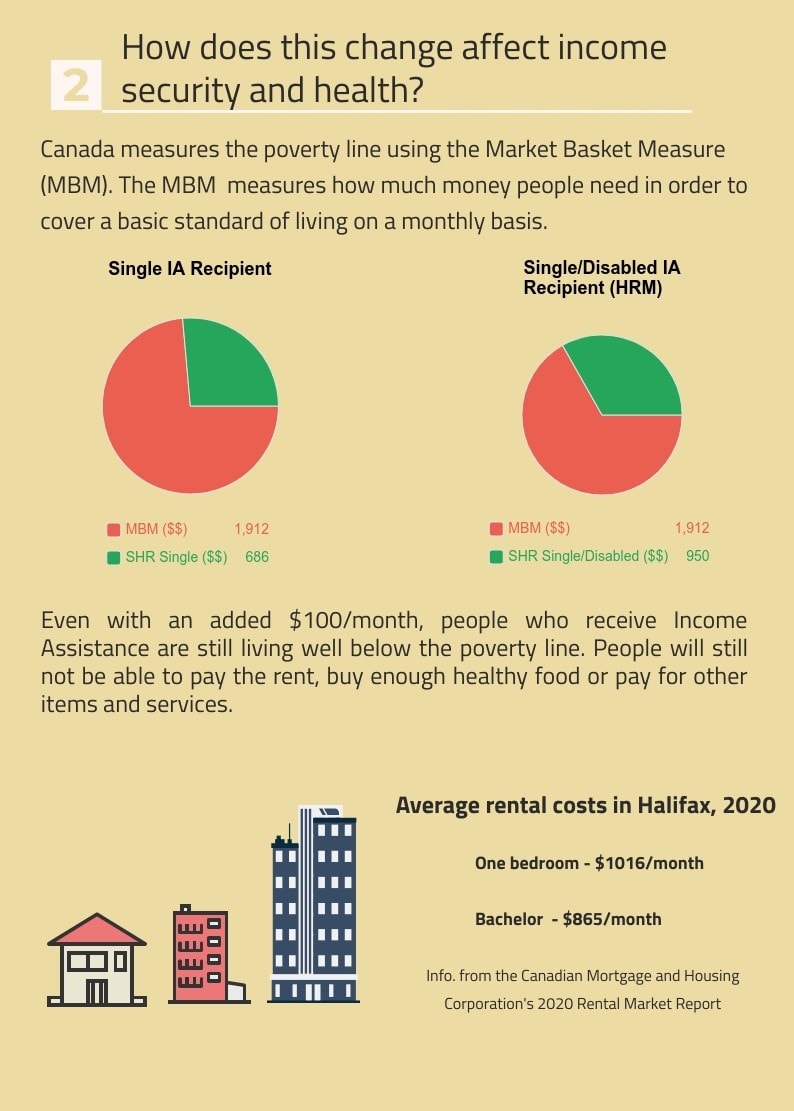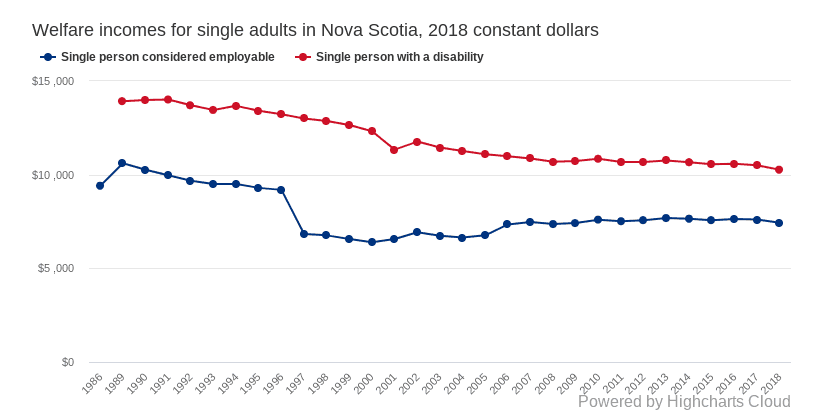
KJIPUKTUK (Halifax) – This year’s provincial budget delivered a little bit of good news for people on income assistance.
An additional $100 across the board for income assistance recipients is the largest increase we have seen in a very long time. Many folks told reporter Kendall Worth, who receives income assistance himself,that they are pleased, and they call it a step in the right direction.
But it is still only a drop in the bucket, they tell him.
With ever increasing rents, like one bedroom apartment rents as high as $900 to $1000 or more that $100 increase really isn’t very much at all, they say.
That $100 increase is not going to stop them from having to use the foodbank services or stop them from depending on places like Souls Harbour, Hope Cottage, etc to get the free meals they offer, is what Kendall is hearing.
They’re correct.
Human rights lawyer Vince Calderhead pulled out his calculator and what he found is not nearly as positive as Community Services bureaucrats suggest.
Calderhead calculated the new yearly incomes for each scenario (single adult, able bodied), single adult with a disability, boarding/owning/renting, single parent with one/two children, family etc.).

In these calculations Calderhead includes not only the income assistance payments, but also any tax credits and child benefits that may apply.
What he finds is that income assistance recipients in Nova Scotia remain desperately poor. Still starving, but slightly less so.
For instance, whereas in 2020 a single adult without disabilities renting in Halifax would have received $594 per month, in 2021 this individual will receive $696 per month. That means they will find themselves living 60% below the poverty line, compared to last year’s 65%.
Similarly, a single adult with disabilities, again renting in Halifax, in 2021 will receive $1038 per month. That will put them 46% below the poverty line, rather than the 2020 rate of 51%.
A single parent with one child will receive $20,372, or $1697 per month. That will put the family 37% below the poverty line for Halifax. And by the way, that makes this family still worse off than their counterpart in any other province in Canada.
You can find Calderhead’s calculations for all scenarios here.
Dalhousie Legal Aid did similar calculations and turned them into a useful graphic. It also mentions the ever rising rents in Halifax, an issue in rural Nova Scotia as well.

The red parts of the pie chart show what you should be getting on top of the current payments to live above the poverty line.
The other thing we shouldn’t forget is that people on welfare have been getting poorer and poorer over the last few decades. $100 doesn’t even begin to address that.

“We have our job cut out for us”
That $100 increase happened for a reason.
There was a lot of pressure on the government to do something. Child poverty rates were among the highest in Canada, while income assistance rates were among the lowest. It’s embarrassing for the government and makes you look heartless, which is something politicians don’t like come election time.
The government hopes that now some of these criticisms will go away. And it may well happen.
After all, A $100 increase sounds pretty good. Most financially well off people, and we include journalists, just don’t know a whole lot about the desperate situation people on income assistance find themselves in.
We have our job cut out for us.
See also: Welfare in Canada: Nova Scotia sucks big time
Check out our new community calendar!
With a special thanks to our generous donors who make publication of the Nova Scotia Advocate possible.
Subscribe to the Nova Scotia Advocate weekly digest and never miss an article again. It’s free!



